State Library Victoria’s collections are rich with depictions of flora – both indigenous and exotic, encompassing science and art form, commercial, horticultural and personal perspectives. Here is a small sample, as we take a turn around the garden and celebrate our floral bounty.
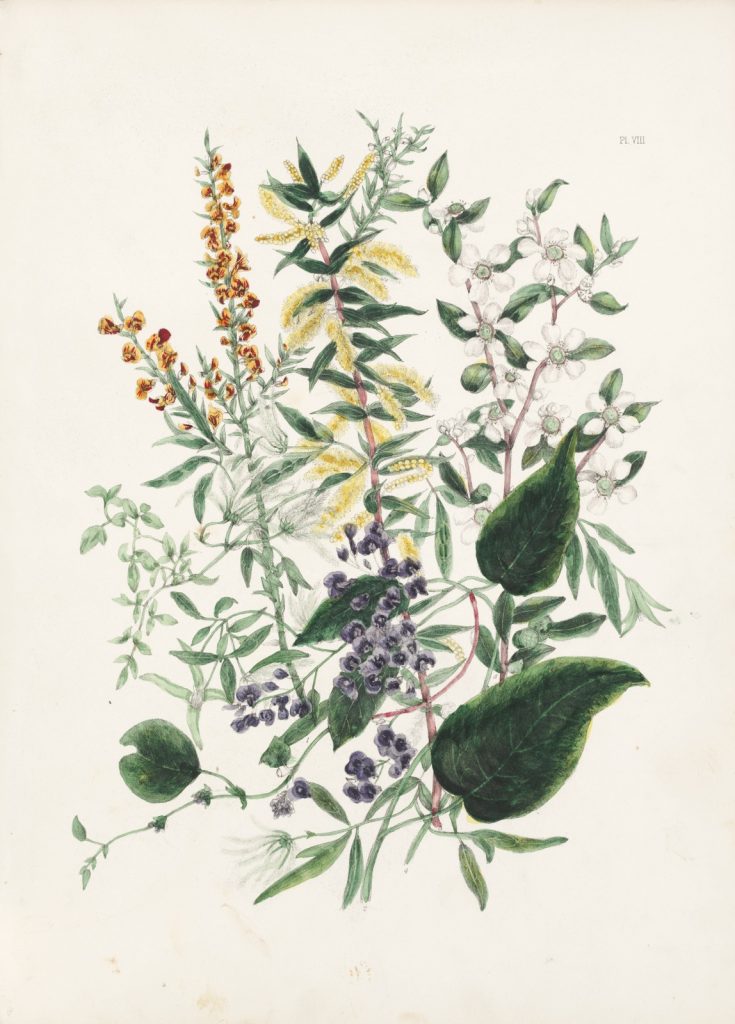
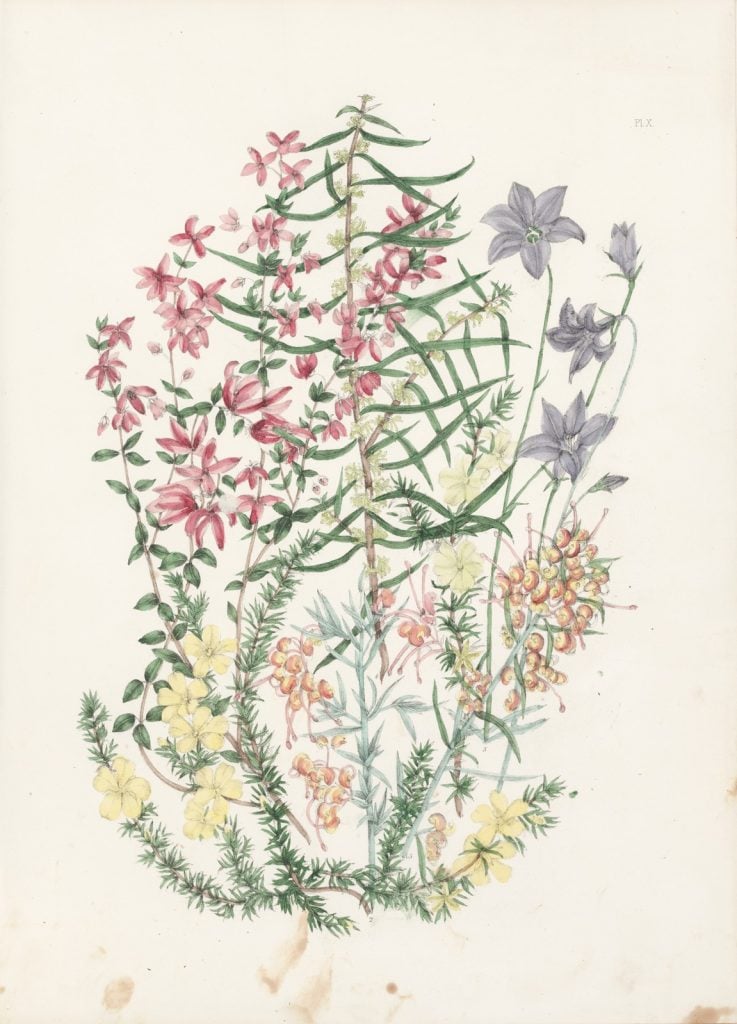
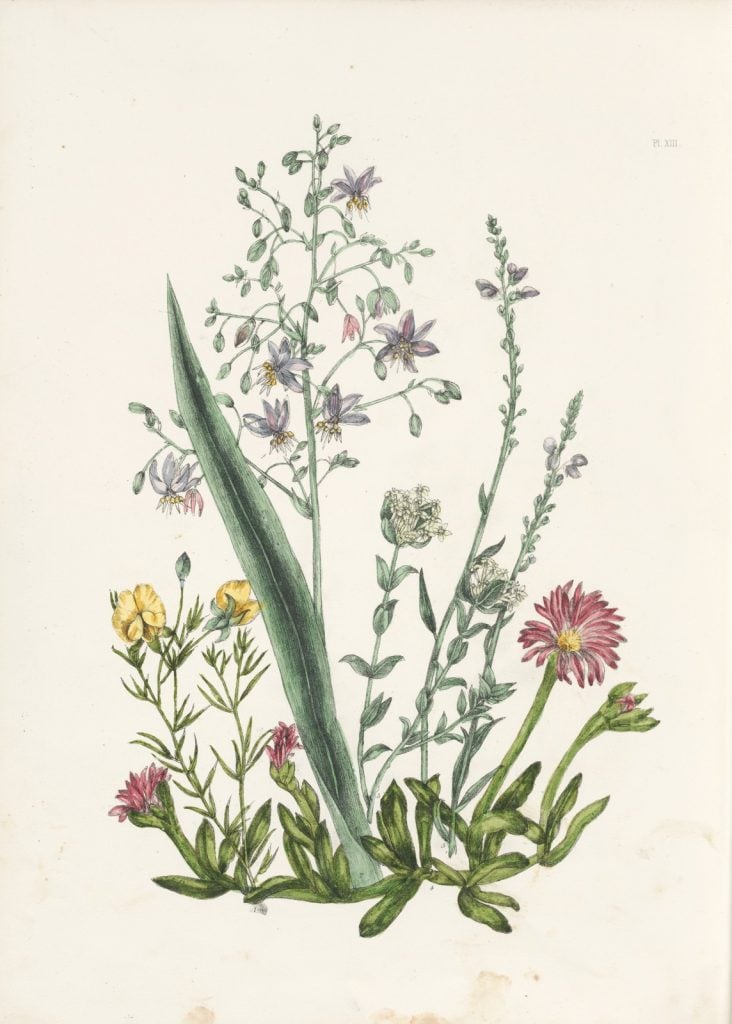
Plates from Charsley, F A, 1867, The wild flowers around Melbourne, Day & Son, London.
(left) 30328102131454/9, 30328102131454/11, 30328102131454/14
Soon after Fanny Anne Charsley’s arrival in Melbourne, she contacted government botanist Baron von Mueller and began collecting plants for him. She later lithographed her drawings for reproduction in The wild flowers around Melbourne. Her work combines exquisite arrangements with botanical accuracy and are an invaluable record of these species from 1860’s Melbourne.
Camilla Hammond’s paintings are featured in Wild flowers from nature (1904), and included a poem to the flora of the ‘Southland’. These publications provided another avenue for women artists to share and support their work.
One hundred Australian wildflowers (1956), published by the Victorian Horticultural Society, encouraged home gardeners to use ‘our flora’ in gardens, ‘particularly interesting as it differs from that in any other part of the world’.
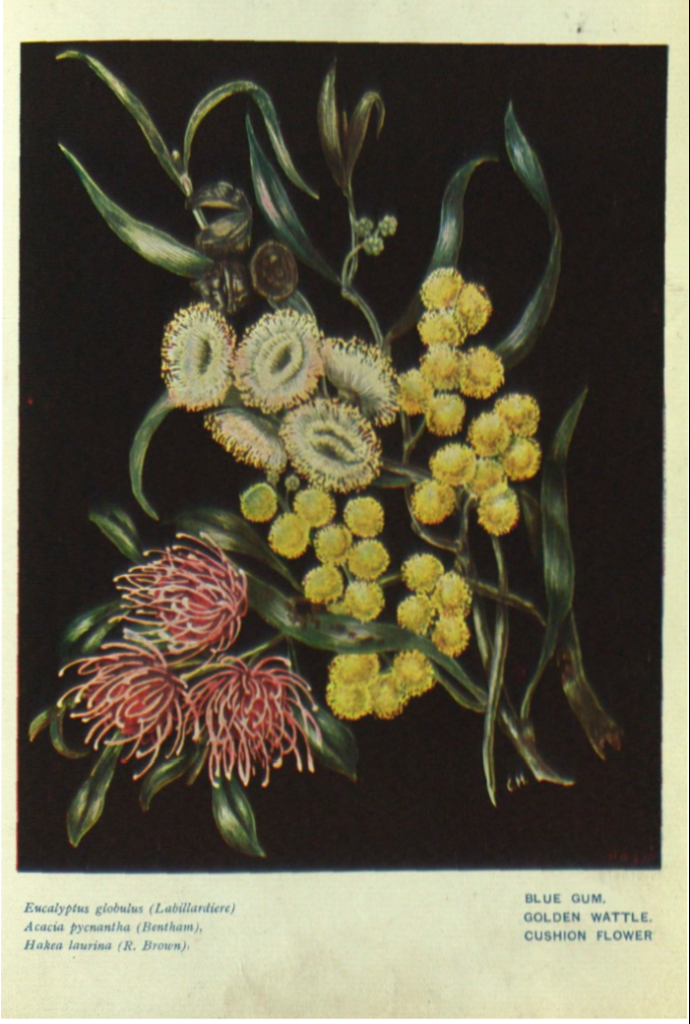
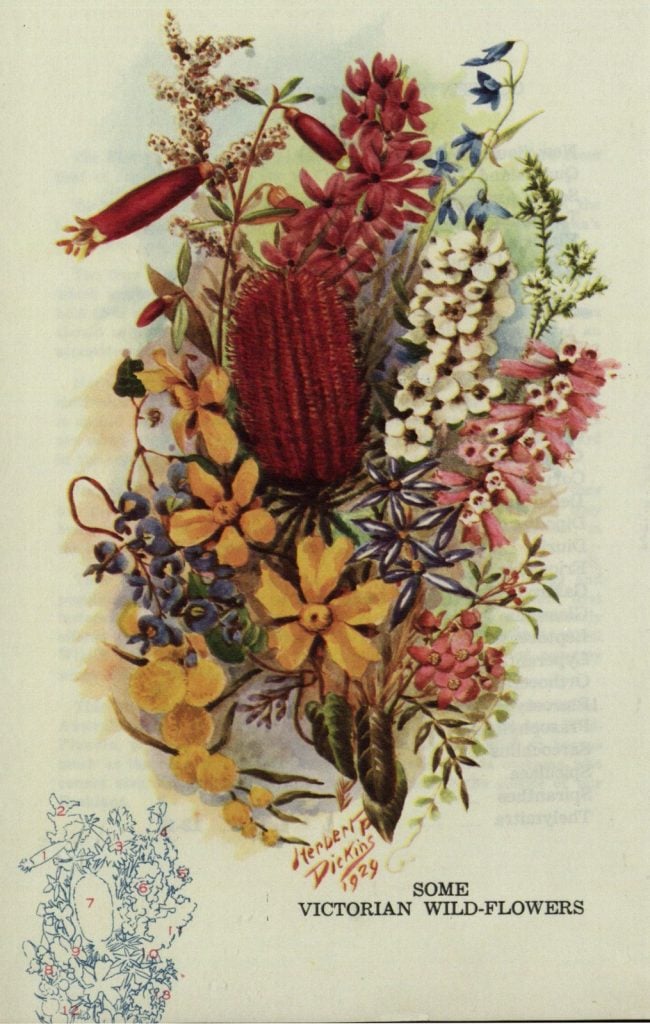
(left) Blue gum, golden wattle, cushion flower, from Hammond, C, [1904], Wildflowers from nature, Robert Jolley, Melbourne.
Some Victorian wild-flowers, from Dickins, H P, 1956, One hundred Australian wildflowers with botanical and vernacular names, [Victorian Horticultural Society], Melbourne.
Agnes Elizabeth Oakley was a painter of Australian wildflowers using a detailed botanical style. E A Vidler published An Australian Flower Painter, A. E. Oakley in 1923. She studied with Phillips Fox and Tudor St George Tucker, and was a member of the Melbourne Society of Women Painters and Sculptors. Her work was very favourably received:
… for some reason Australian artists have neglected their native flora. They paint landscapes, in which wattle and the like appear in the mass, but the painting of wild flowers as such has attracted them only intermittently. It is regarded as a side line. Save by a few exceptions, one of whom is Miss Oakley. She has achieved great success in this direction; the examples of her work given display a fine sense of colour, form, and arrangement…they breathe the very spirit of the bush.
An Australian flower painter The Sydney Morning Herald, (3 November 1923), p 12.
Florence Higgs left for England with her family after training as an art teacher at the Royal Melbourne Technical College. Later, studying lithography at the Central School of Art and Design in London, she became a member of the London Guild of Weavers and the Society of Designer-Craftsmen. The Library received a series of her prints as a gift from her family.
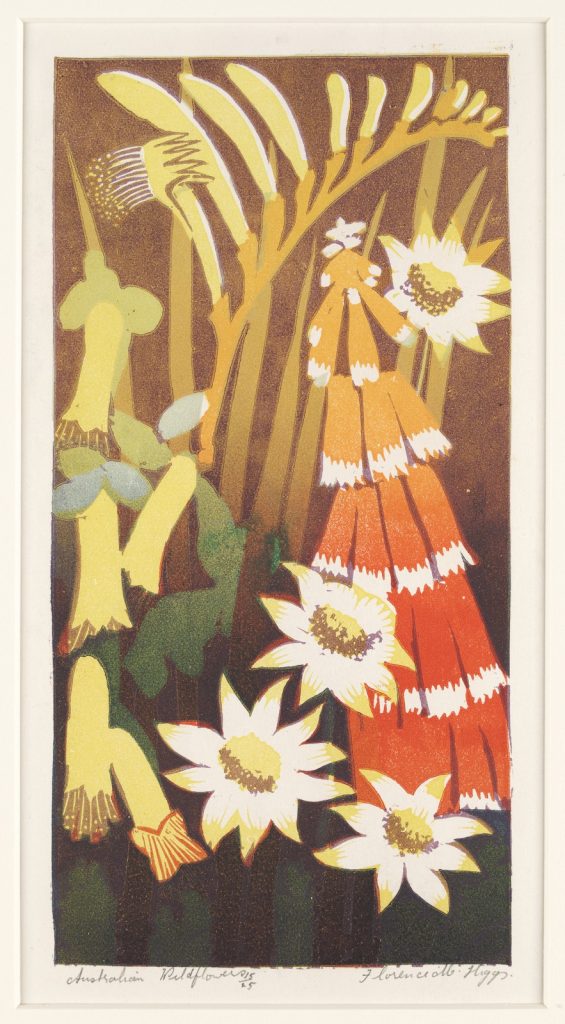
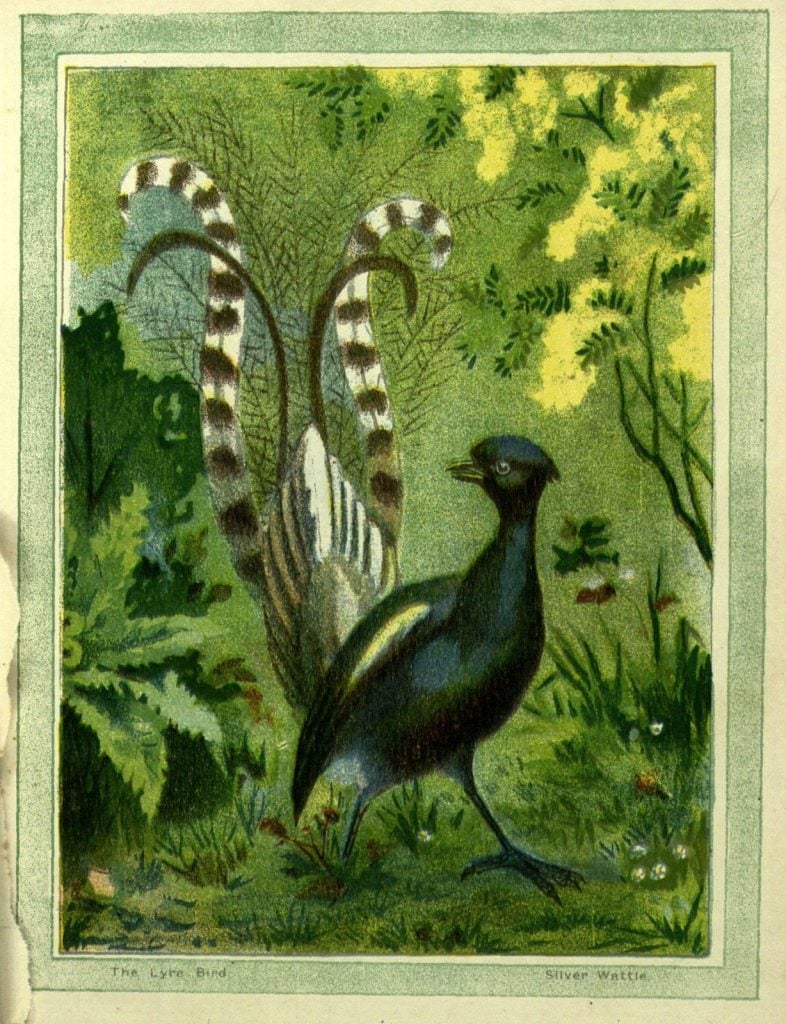
(left) Higgs, Florence, [1954] Australian wildflowers, linocut. H93.417/1. This image is in copyright.
Lyre bird and silver wattle. Birds of the sunny south, with Australian flowers – produced entirely by Australians, [1915]
Birds of the sunny south combined the talents of three women, active in Melbourne art world of the early 20th century – Violet Teague, Ina Gregory and Geraldine Rede illustrated the birds and Alf Ashley provided the floral illustrations.
Edith Coleman joined the Field Naturalists of Victoria in 1922 and in 1949 was the first woman to receive the Australian Natural History medallion. Her writing career spanned nearly 30 years as she worked to spread knowledge and love of natural history. In Come back in wattle time, Edith writes of the significance of wattle in wartime:
During the Great War, thousands of Australian soldiers received a spray of wattle-blossom in their letters from home. What message did the faded flowers carry? One may venture to say that not a man could speak, even to-day, of the sweetness, and the pain, conveyed by the tiny spray of blossom. It whispered something deeper than ‘come back’.
Come back in wattle time, p 9.

Coleman, E, 1935, Come back in wattle time: an illustrated handbook to our Australian wattles, Robertson & Mullens, Melbourne.
Lucy Newell, painter and textile artist, was born and spent much of her life in Castlemaine. Her mother Alice Newell, also an artist, was a joint founder of the Castlemaine Art Gallery. On a block next to their home, Kaweka, Alice developed a wildflower reserve. The land was donated to the community in 1966 by then owner Don McCrae, and today Kaweka Wildflower Reserve continues to be supported by an active Friends group.
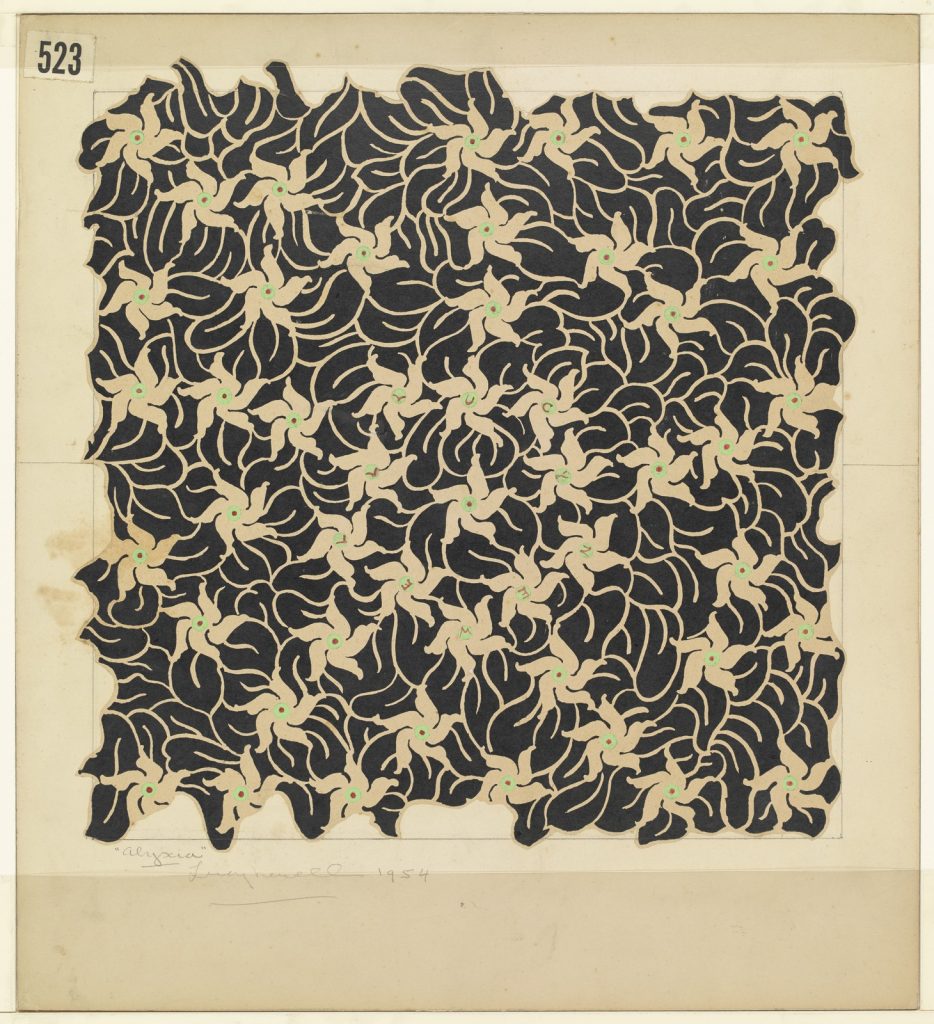
Alyxia. Watercolour by Lucy Newell, 1954; H2000.40/59
Shell produced a series of guides, to encourage ‘interest in the abundant natural flora of Australia’. Designed to be ‘informative and interesting to the general public…. a practical handbook … to those taking trips into the country.’ The 1944 edition included a list of wildflowers protected under the Victorian Wildflowers and native plants protection act of 1930 and stated that ‘unnecessary gathering of Wild-Flowers should be discouraged; they are too beautiful to be wasted’.
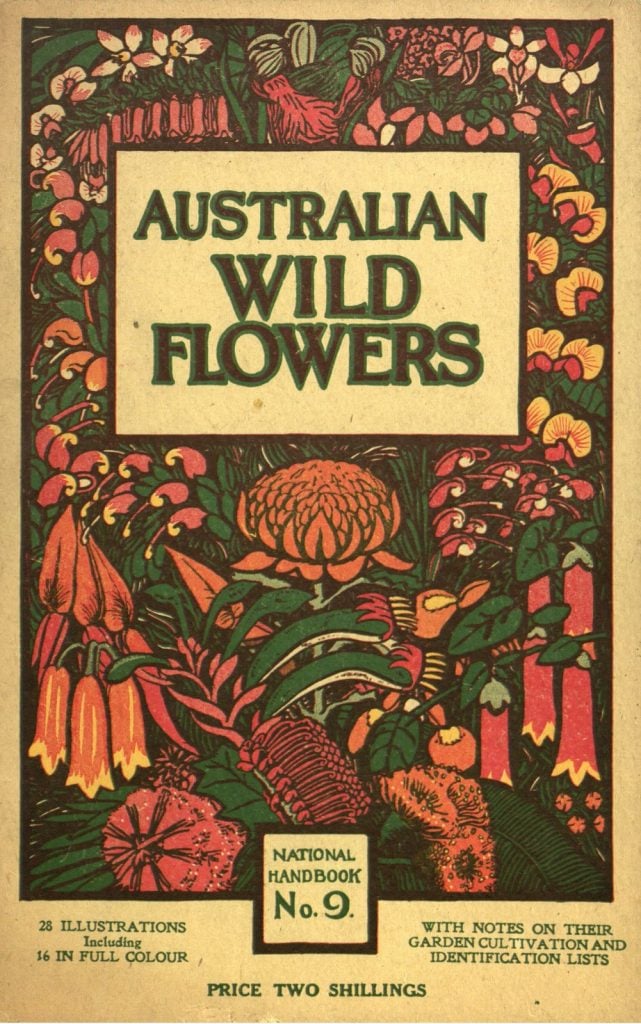
Dickens, H.P, & Rowan, E, 1944, Australian wild flowers : a popular introduction to the wild-flowers of Australia : with notes on their characteristics and the localities where they may be found, Robertson & Mullens, Melbourne.
The illustrations were by Herbert Peabody Dickins and included works by Ellis Rowan, a prolific and well-travelled illustrator of Australian flora.
Their project card albums were published on various themes – the below series introducing card collecting to the world of Australian plants. Designed to create an album, with each card numbered – a corresponding slot, with a snack sized package of information, awaited the addition of the matching picture card.
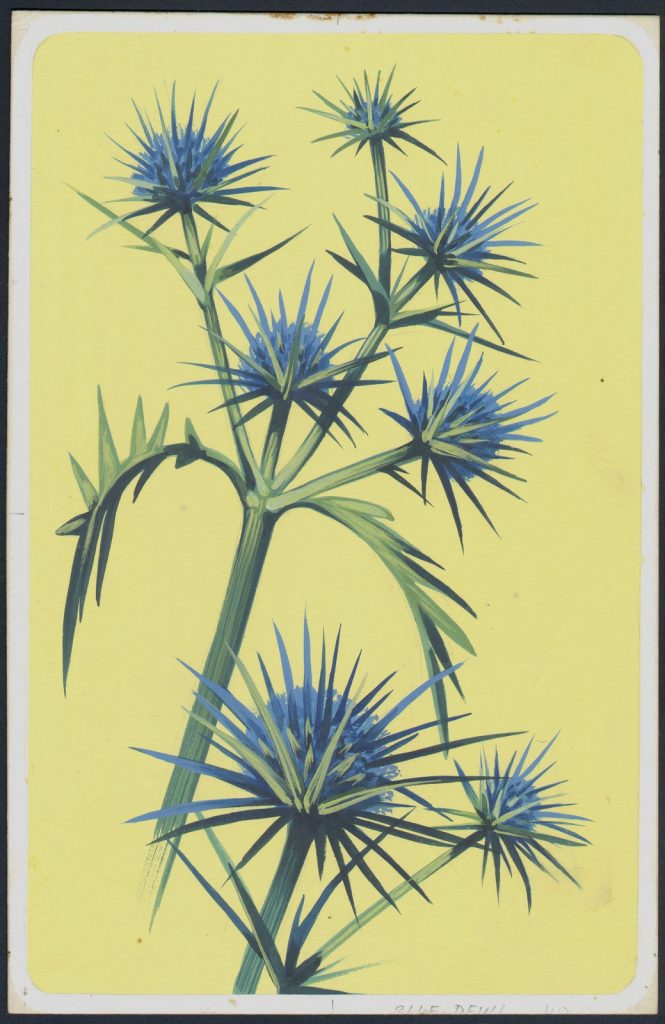
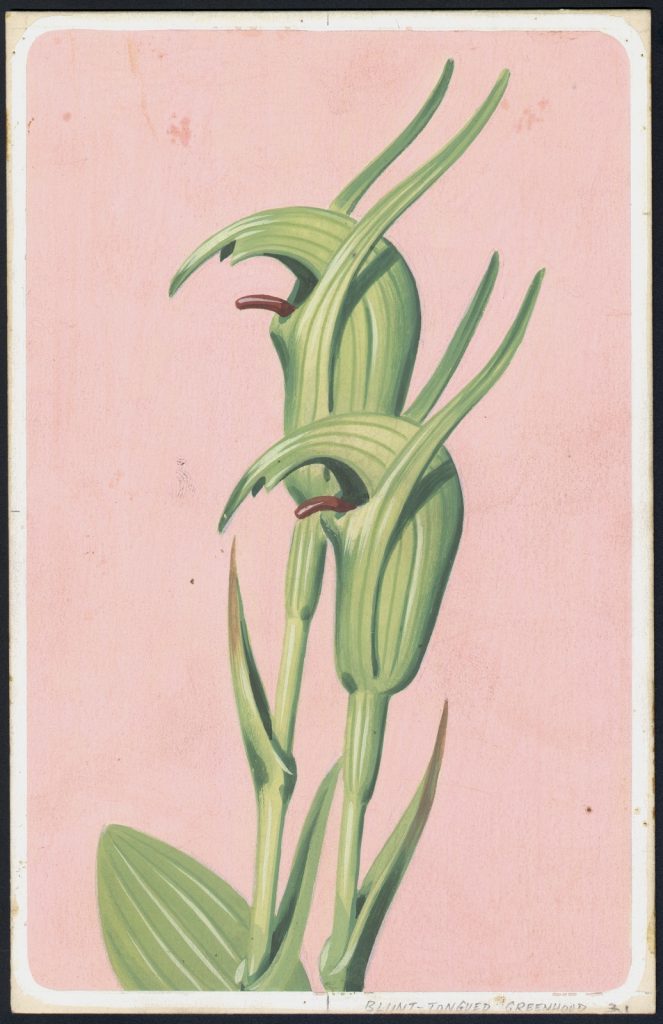

Warner, R, [1959], Discover Australia with Shell project cards, wildflower series.
Blue devil (H2006.47/953), Blunt-tongued greenhood (H2006.47/944), Clematis (H2006.47/947).
These images are in copyright.
Articles highlighting and encouraging appreciation of Australian plants appeared increasingly in newspapers and magazines – encouraging home gardeners to embrace ‘nature’s beauties’ and the bushland aesthetic. Edna Walling, noted landscape designer and gardener, increasingly used native plants in her gardens. The Library holds a large collection of Walling’s garden plans, many of which show the integration of native and non-native plants.

This image is in copyright.
Here, in Walling’s own garden at Lorne, the natural bushland grows into and becomes the garden itself.
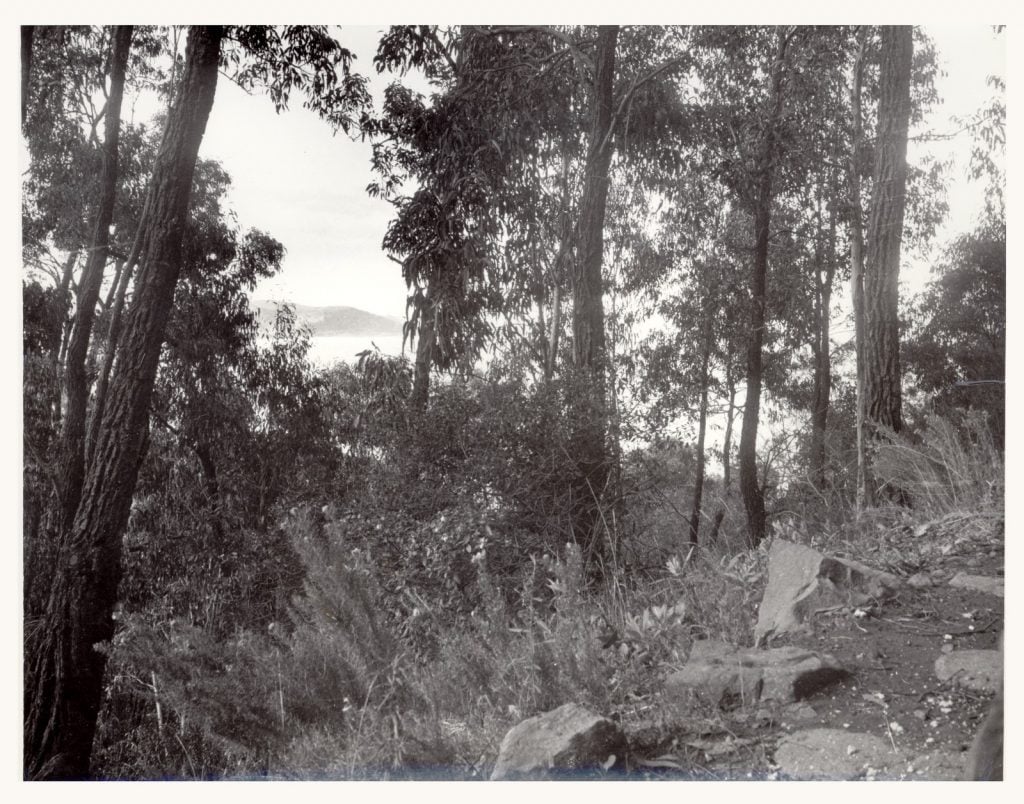
More to explore:
Cowley, D, Women’s work: illustrating the natural wonders of the colonies, La Trobe Journal, 2002, no 69.
Gardenesque : a celebration of Australian gardening, State Library Victoria, 2004.
Baskin, J and Dixon, T, 1996, Australia’s timeless gardens National Library, Canberra.
Edna Walling, State Library Victoria, ABC.
Cranbourne Botanic Gardens – Australian plant collections.


Just lovely to view these treasures… as I’ve been drawing herbs and flowers from my spring garden… gorgeous. Thanks for sharing.
Hello Paula – thankyou! it was hard deciding what to include, so glad you enjoyed the post, and thanks for letting us know!